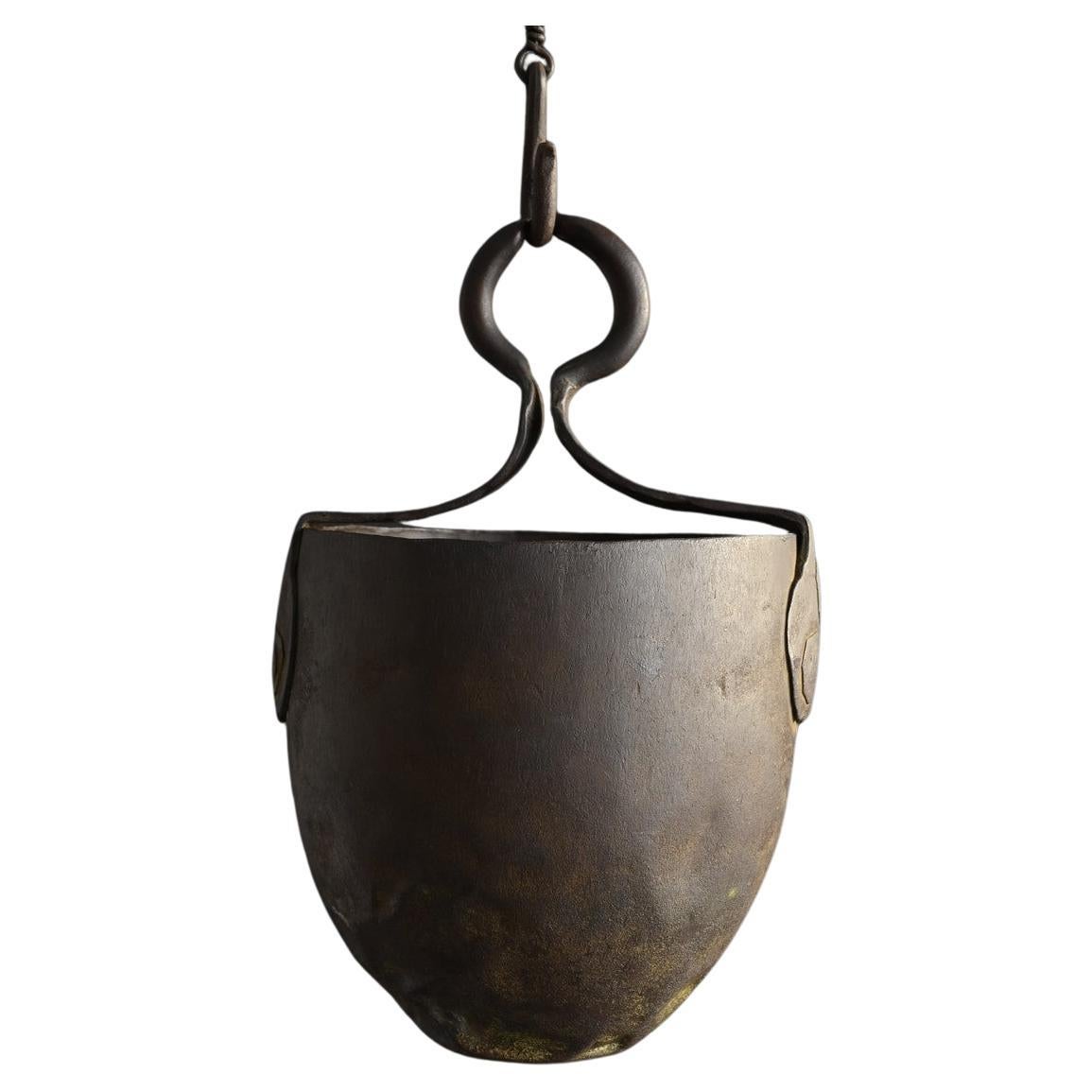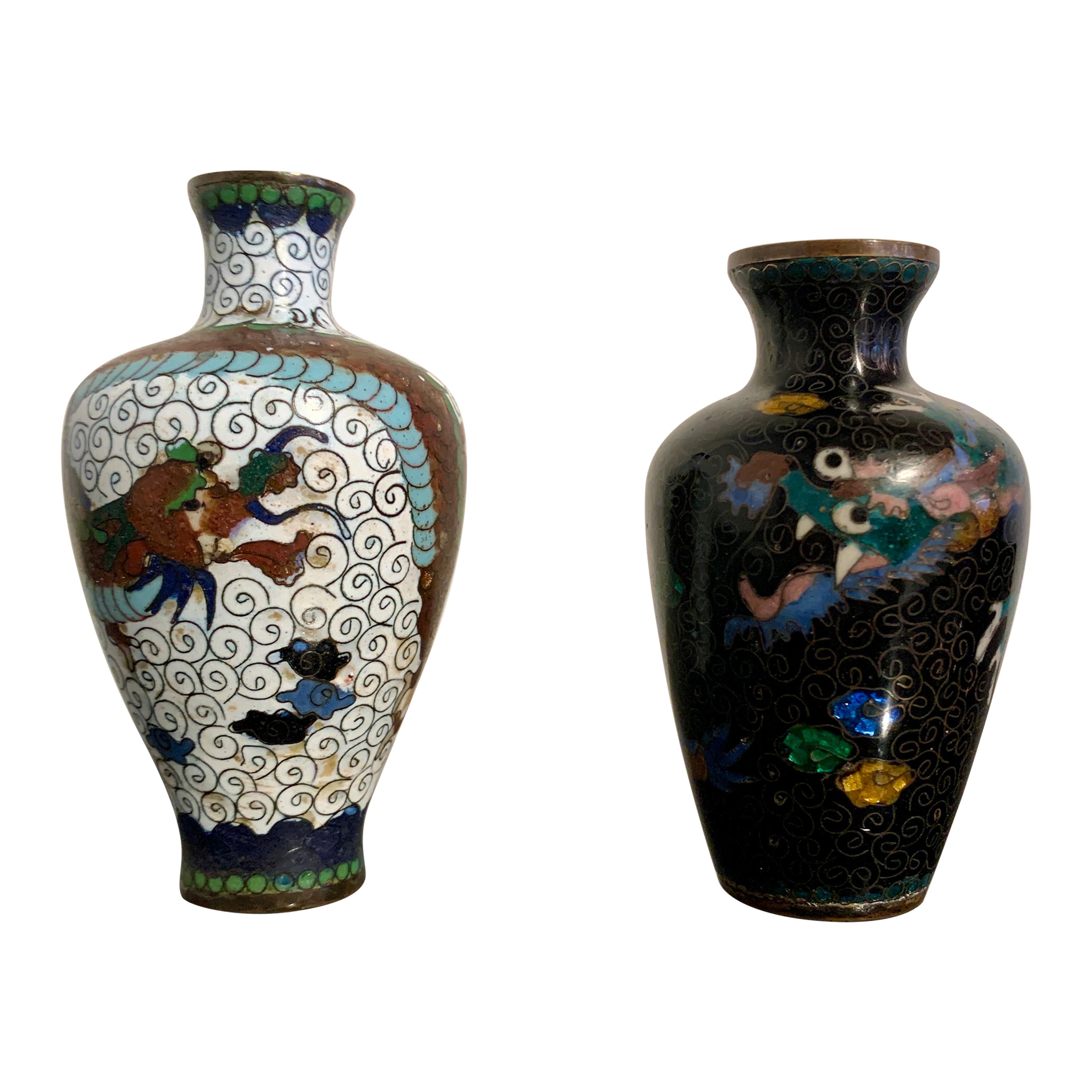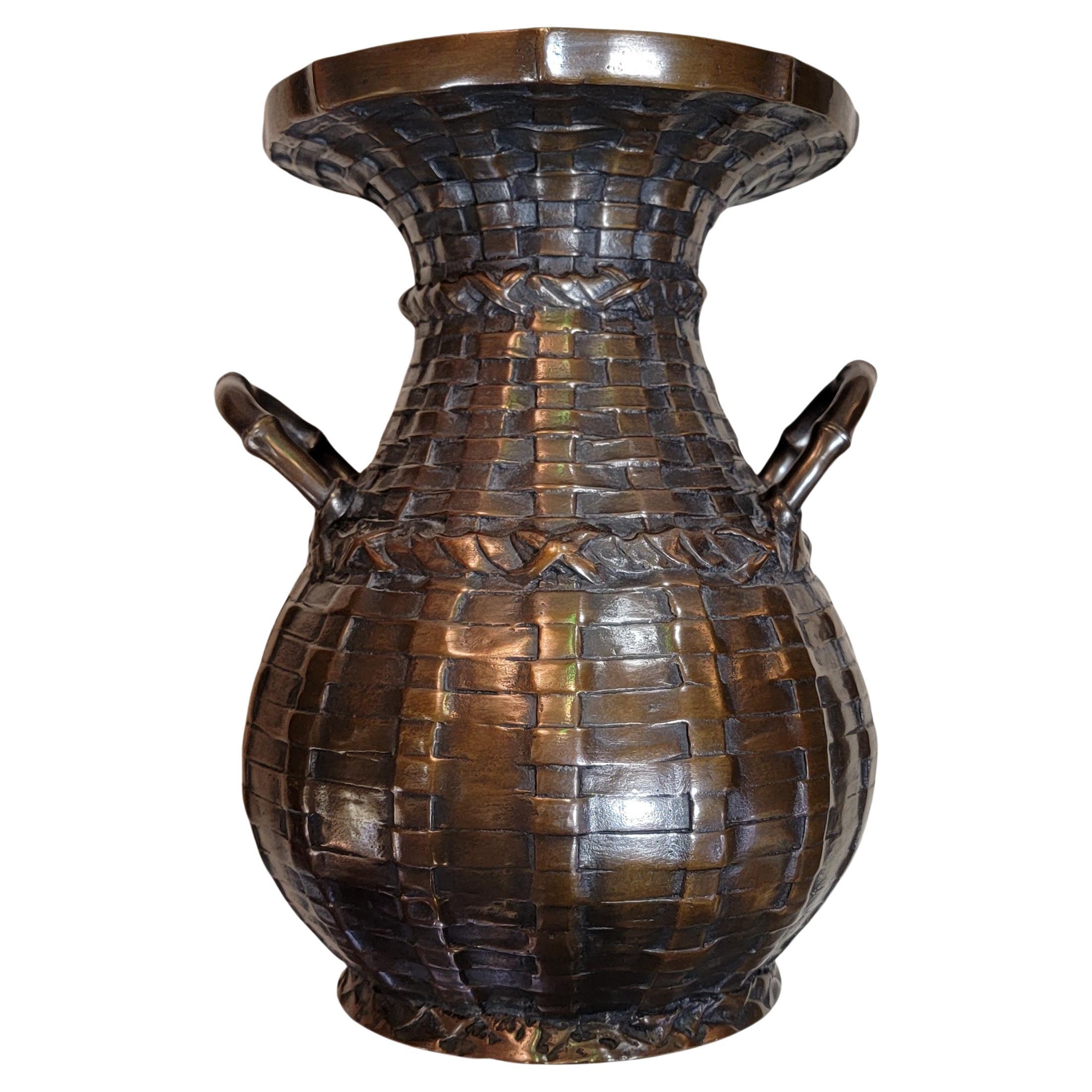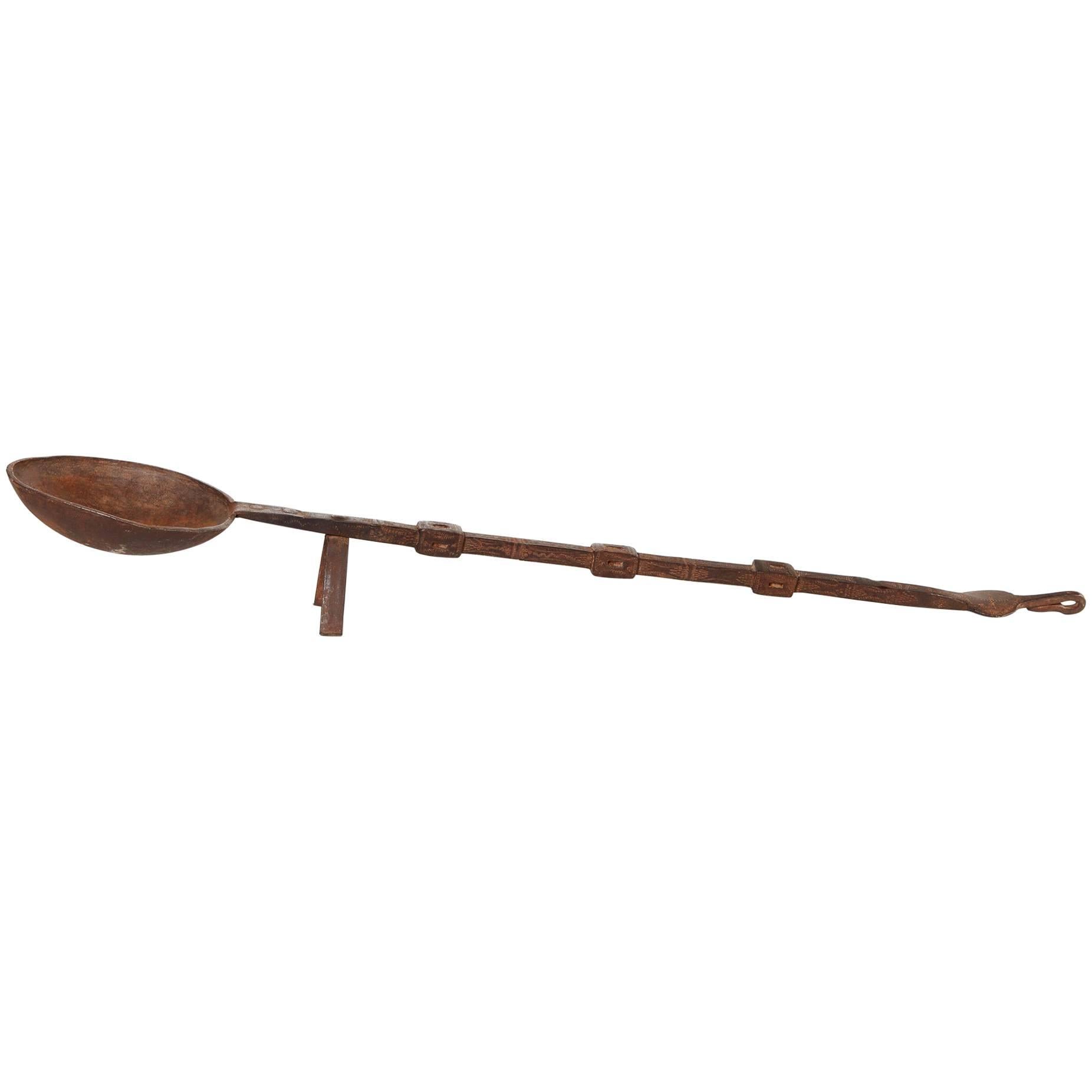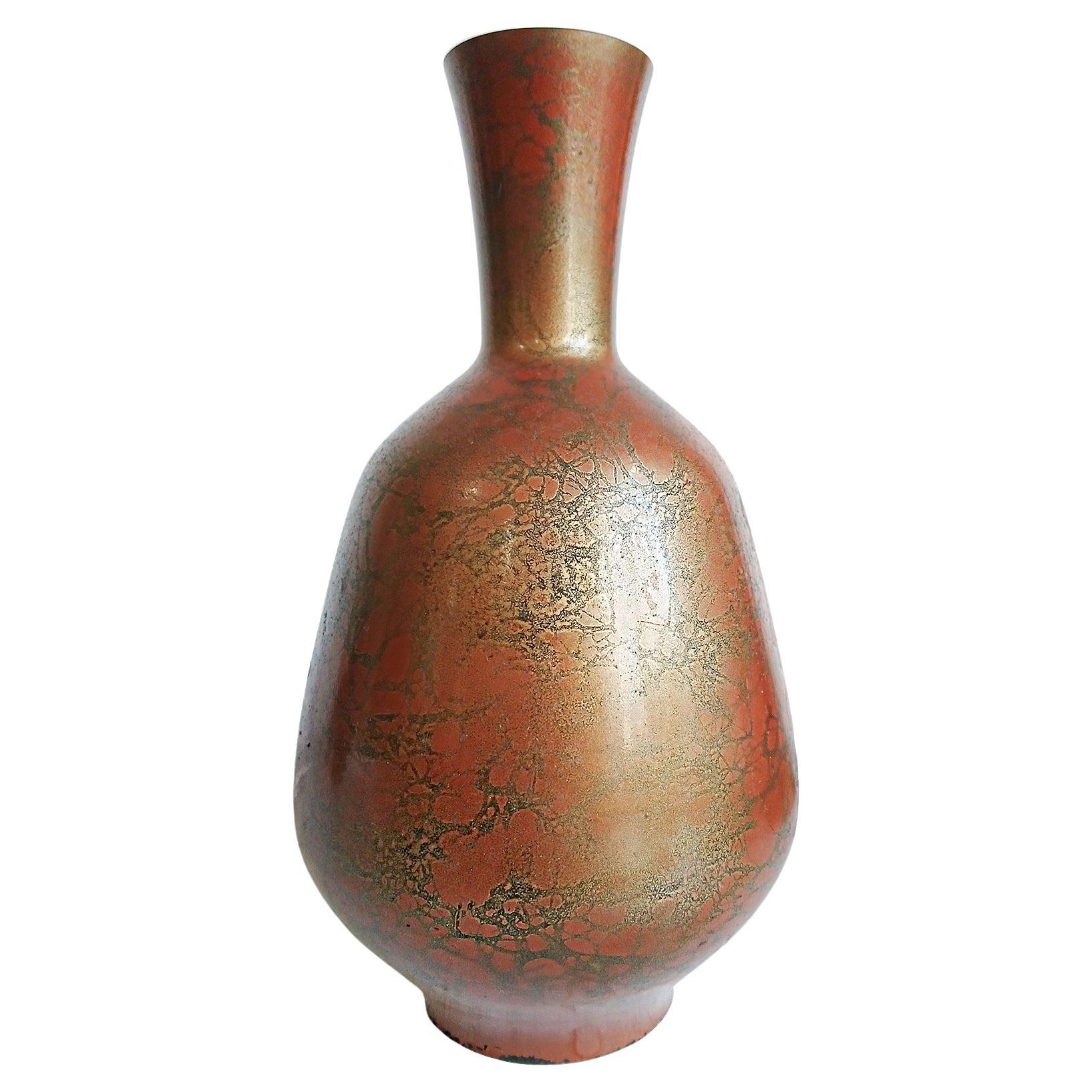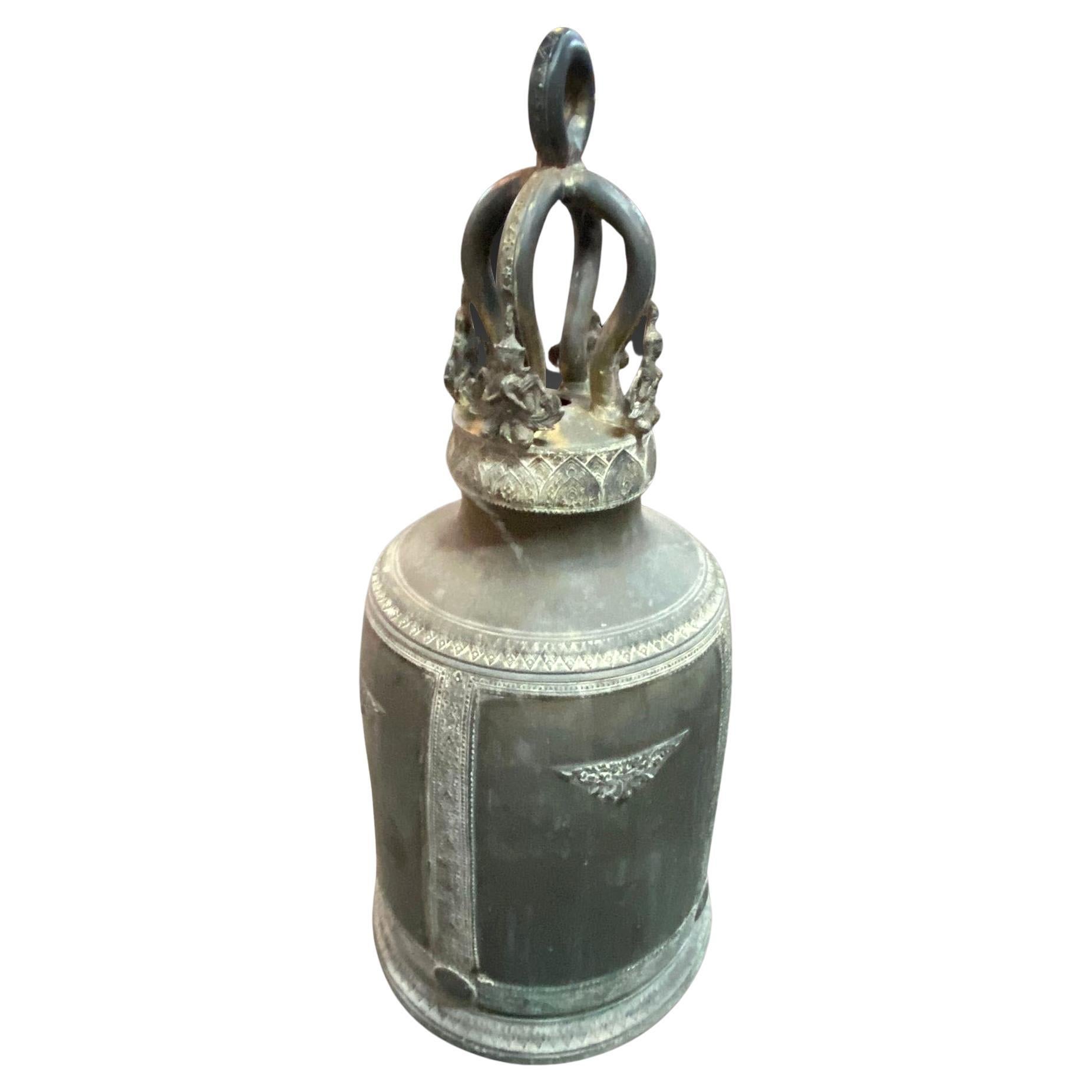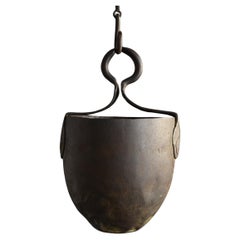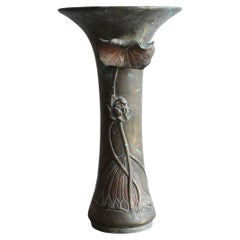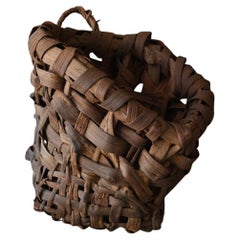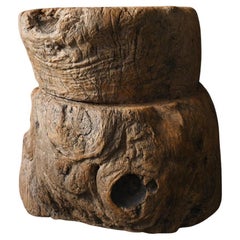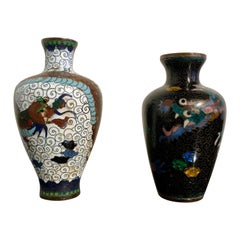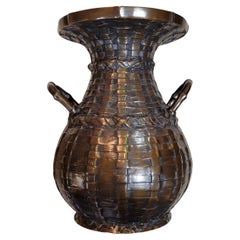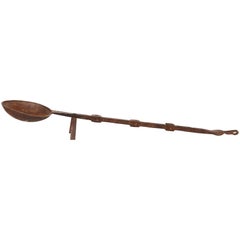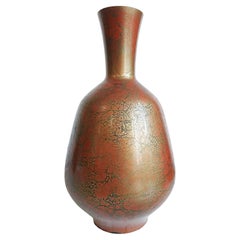Articles similaires à Antique iron hanging bell from Japan or East Asia/Early 20th century
Vous voulez plus d'images ou de vidéos ?
Demander au vendeur plus d'images ou de vidéos
1 sur 21
Antique iron hanging bell from Japan or East Asia/Early 20th century
À propos de cet article
This is an old iron hanging bell believed to have been made over 100 years ago. It is highly likely that it was manufactured in Japan, though the possibility of Korean or Chinese origin cannot be ruled out. It was used for many years in the home of a Japanese collector, where it served as a doorbell to welcome visitors, thus carrying a rich historical background as a charming antique.
Inside the bell is a clapper, called a "zetsu" in Japanese, which is the key part that produces the sound. The included wooden stick was originally tied to this clapper with a string, allowing the bell to be rung by swinging the stick. The stick bears an inscription in ink that reads, "Please ring if you need assistance," serving as a guide for visitors on how to use it.
A distinctive feature of this bell is that, unlike most Japanese temple bells which are commonly made of bronze, this one is made of cast iron. The substantial weight and the weathered patina of rust accumulated over time give it a unique presence. The rustic and robust character of iron adds a deep sense of traditional Japanese aesthetics (wabi-sabi) when incorporated into modern interior designs.
The form of the bell emulates the traditional shape seen in temples, with a basic pyramidal shape that widens towards the bottom in an elegant flared line. Its simplicity is paired with dignity, lending a serene atmosphere to any space. The worn rust and traces of age make it an irresistible piece for antique lovers.
Additionally, an old iron chain, prepared separately, pairs perfectly with this bell. Displaying them together enhances the overall sense of weight and creates a harmonious, unified look in the space. Each link of the chain carries the characteristic texture of aged iron, further accentuating the bell’s appeal. The total weight including the chain is approximately 5 kilograms, giving it a solid and impressive presence beyond what the eye perceives.
Due to its distinctive heaviness and historic charm, this bell fits surprisingly well not only in Japanese-style interiors but also in modern or industrial-themed spaces. For example, hanging it from the ceiling of an entrance or earthen floor area creates a welcoming sign full of depth and character. Its ability to be rung makes it practical as a doorbell, while also adding a nostalgic soundscape to the environment.
It is also recommended as a striking accent piece for the living room. Placing it near a window or alcove allows the rust’s texture to change subtly with light and breeze, making it an ever-changing art piece. Especially when paired with solid wood furniture or lacquerware, it enriches the traditional Japanese aesthetic of wabi-sabi.
Furthermore, hanging it under the eaves of a Japanese garden or veranda to enjoy the gentle ringing in the natural breeze is a lovely idea. If placed outdoors, be mindful of further rusting and deterioration; a somewhat sheltered spot protected from heavy rain and wind is advisable.
Moreover, using it as interior decor in shops or cafes lends an air of history and dignity to the space. Simply placing this bell in a minimalist environment conveys to visitors that the location is special and thoughtfully curated.
【Condition】
There are signs of rust and minor scratches from long-term use, but the structure remains solid. The clapper and wooden stick are included, and the bell can actually be rung. Please retie the string on the wooden stick when using. We ask for your understanding of these features as part of the item’s aged charm.
【Size and Weight】
Bell body: approx. W15.5cm × D15.5cm × H22.9cm (including the semicircular hanging ring)
Height including the S-shaped hook: approx. 30cm
Total length including the chain: approx. 197.5cm
Total weight: approx. 5kg (including chain)
Item number: OB291
[We mainly sell old Japanese items.
We've seen tens of thousands of items so far.
Taking advantage of that experience, we are posting attractive items here.
We are able to do this because we have many years of experience.
There are parts of Japan that are familiar to Japanese people but are still unknown to the rest of the world.
We will continue to offer products that will allow you to fully experience this feeling.]
- Dimensions:Hauteur : 22,9 cm (9,02 po)Largeur : 15,5 cm (6,11 po)Profondeur : 15,5 cm (6,11 po)
- Style:Taisho (De la période)
- Matériaux et techniques:Fer,Moulage
- Lieu d'origine:
- Période:
- Date de fabrication:Early 20th century
- État:
- Adresse du vendeur:Sammu-shi, JP
- Numéro de référence:1stDibs : LU5487245195432
À propos du vendeur
5,0
Vendeur Platine
Vendeurs premium dont la note est supérieure à 4,7 et le délai de réponse de 24 heures maximum
Établi en 2015
Vendeur 1stDibs depuis 2020
1 562 ventes sur 1stDibs
Temps de réponse habituel : 4 heures
- ExpéditionRecherche du devis...Expédition depuis : senzoku, Japon
- Politique des retours
Certaines parties de cette page ont été traduites automatiquement. 1stDibs ne garantit pas l'exactitude des traductions. L'anglais est la langue par défaut de ce site web.
Garantie d'authenticité
Bien qu'il soit peu probable que la situation se présente, dans le cas où vous rencontreriez un problème d'authenticité d'un article, contactez-nous dans un délai d'un an pour obtenir un remboursement intégral. DétailsGarantie de remboursement
Si votre article n'est pas conforme à la description, est endommagé pendant le transport ou ne vous est pas livré, contactez-nous sous 7 jours pour obtenir un remboursement intégral. DétailsAnnulation sous 24 heures
Vous disposez d'un délai de 24 heures pour annuler votre achat sans motif.Des vendeurs professionnels agréés
Nos vendeurs de renommée mondiale doivent respecter des normes strictes en matière de service et de qualité, afin de préserver l'intégrité de nos fiches produit.Garantie d'alignement des prix
Si vous constatez qu'un autre vendeur a mis en vente le même article à un prix inférieur sur un autre site, nous nous alignerons sur ce prix.Livraison en toute confiance à l'international
Notre réseau de transporteurs de premier ordre propose des options d'expédition spécialisées dans le monde entier, y compris des livraisons personnalisées.Plus d'articles de ce vendeur
Tout afficherSeau asiatique antique en cuivre "tsurube" /20e siècle/ vase à fleurs suspendu
Il s'agirait d'un "tsurube" (seau à eau) en bronze fabriqué au Japon ou en Asie de l'Est.
Il était probablement utilisé pour puiser de l'eau dans les puits.
La base présente des boss...
Catégorie
20ième siècle, Est asiatique, Autre, Ferronnerie
Matériaux
Cuivre
Vase japonais ancien / Sculpture de lotus / Vers le 19ème siècle
Japon ère Meiji - ère Taisho (environ 1868-1910)
Fabriqué en laiton et décoré de fleurs de lotus.
c'est très beau.
La forme de ce vase s'étend également de bas en haut comme une f...
Catégorie
Antiquités, Fin du XIXe siècle, Japonais, Meiji, Vases
Matériaux
Laiton
Antique panier mural tissé japonais/20e siècle/Wabi-sabi vase
Il s'agit d'un panier rustique tressé en écorce de noyer, fabriqué au Japon vers le 20e siècle.
Au Japon, les outils en matériaux naturels sont utilisés depuis l'Antiquité comme pani...
Catégorie
20ième siècle, Japonais, Taisho, Art décoratif
Matériaux
Bois
Tabouret japonais en bois ancien/début du 20e siècle/table basse en bois
Cet article est un mortier en bois qui évoque le bon vieux temps du Japon et qui est imprégné de l'esthétique de l'histoire et du wabi-sabi. Il était autrefois utilisé pour les céléb...
Catégorie
Antiquités, Fin du XIXe siècle, Japonais, Taisho, Tabourets
Matériaux
Bois
Étagère de rangement japonaise en bois ancien/début du 20e siècle/armoire en laine
Il s'agit d'un meuble de rangement vertical en bois, fabriqué en cèdre japonais dans la première moitié du XXe siècle. Bien que l'on ne sache pas où il a été utilisé, son apparence d...
Catégorie
Début du 20ème siècle, Japonais, Taisho, Meubles de rangement
Matériaux
Cèdre
Cloche de temple chinoise ancienne en fonte fabriquée en alliage de cuivre / cloche de temple
Une ancienne cloche à main chinoise en alliage de cuivre.
Je pense que c'est de la fin de la dynastie Qing à la fin de la dynastie Qing.
Bien qu'il s'agisse d'un moulage, la décora...
Catégorie
Antiquités, XIXe siècle, Chinois, Qing, Ferronnerie
Matériaux
Laiton, Bronze
Suggestions
Deux petits vases japonais en cloisonné représentant des dragons, début du 20e siècle, Japon
Deux charmants petits vases japonais à dragon cloisonné, période Meiji à Taisho, début du 20e siècle, Japon.
Les vases miniatures sont de forme balustre, avec des corps ovoïdes e...
Catégorie
Début du 20ème siècle, Japonais, Taisho, Ferronnerie
Matériaux
Cuivre, Émail, Papier d'aluminium
Vase panier tissé en bronze japonais du début du XXe siècle
Vase en vannerie de l'ère Taisho. Signé. Moulage en bronze massif très lourd et substantiel. Belle patine d'origine et bon état. Mesure 10,13 pouces de haut.
Catégorie
Début du 20ème siècle, Chinois, Taisho, Vases
Matériaux
Bronze
1 250 $US Prix de vente
30 % de remise
Utencil de cuisine en fer d'Inde du début du 20e siècle
Ustensile de cuisine en fer du début du 20e siècle provenant de l'Inde
Il s'agit d'un objet décoratif cool et inhabituel.
Catégorie
Début du 20ème siècle, Indien, Ferronnerie
Matériaux
Fer
Vase japonais en laiton, début du 20e siècle
Un élégant vase en laiton, fabriqué à la main au Japon, période Showa. La finition est le Murashido, une technique séculaire qui consiste à tremper le laiton coulé dans de l'huile ch...
Catégorie
Vintage, années 1920, Japonais, Showa, Vases
Matériaux
Laiton
Cloche en bronze, Inde, 20e siècle
Cloche de bronze. Inde, 20e siècle.
Cloche en bronze avec un corps haut et une base ovale, presque rectangulaire en hauteur, qui a une partie supé...
Catégorie
20ième siècle, Indien, Autre, Ferronnerie
Matériaux
Bronze
Début du 20e siècle, Showa, Vase en bronze japonais
Vase japonais en bronze de belle forme, utilisé pour décorer les arrangements floraux lors de la cérémonie traditionnelle du thé au Japon.
Age : Japon, Période Showa, Début du 20èm...
Catégorie
Début du 20ème siècle, Japonais, Ferronnerie
Matériaux
Bronze
600 $US Prix de vente
20 % de remise
